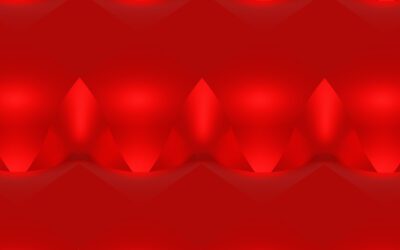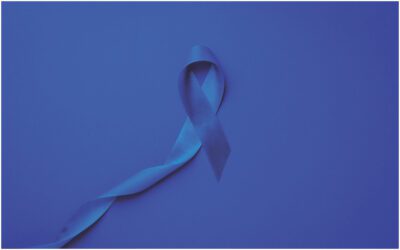The days are growing longer, and we find ourselves outdoors at our children’s soccer, baseball, and tennis matches. We may also notice an increase in itchiness of the skin and a red scaly rash that often appears in the bends of the arms, legs, and neck. Previously we discussed allergies and asthma, so this month we focus on the third member of what is known in medicine as the atopic triad, or the tendency of asthma, eczema, and allergies to occur together.
Atopic disease is a result of our normal immune responses being in overdrive. The cells of our immune system involved in atopic disease include eosinophils, basophils, and mast cells. Ultimately, these cells result in the release of a hormone called histamine. Histamine has differing functions depending on where in the body it is released (brain, gut, or skin). In the skin, histamine is responsible for itching and in the extreme case, the hives of an allergic reaction. We will focus specifically on the function of histamine in the skin and its role in two very common skin conditions: atopic dermatitis and contact dermatitis.
CONTACT DERMATITIS
Contact dermatitis is commonly experienced during spring and summer. It occurs after being in direct contact with an offending agent, often a plant or chemical. The reaction will include itching but also usually have a skin reaction such as raised, red ares on the skin or fluid-filled blisters. This is most recognized in association with poison ivy.
In my practice I often see contact dermatitis developing in response to sunscreens, lotions, or cosmetics. These reactions may present with scattered red bumps. Removal or avoidance of the offending agent is the key to managing contact dermatitis. In general, I recommend the use of a mineral-based sunscreen with zinc as the active agent. Another common presentation of contact dermatitis is metal sensitivities to nickel, copper, or aluminum. This often presents with a dermatitis of the ear lobes (earrings), fingers (rings), or in the middle of the waistline (pants button). This can be addressed with the use of more pure precious metals (gold, silver, or platinum) or prevention of contact of the metal with the skin.
ATOPIC DERMATITIS (ECZEMA)
Atopic Dermatitis is a condition that affects fifteen to twenty percent of children and one to three percent of adults. Atopic dermatitis, or eczema, is felt to be caused by a “leaky” skin barrier that allows water to escape resulting in over-drying of the skin. Additionally, exposure to soaps, detergents, and allergens such as pollen, dust mites, and animal dander can further break down the barrier between skin cells. This dry, cracked skin becomes susceptible to skin infections that only exacerbate the disease process. Presentation usually involves a red, itchy, scaly rash occurring commonly in the folds of the arms, behind the bend of the legs, and even behind the ears. However, the rash can occur on any skin surface.
The itch, scratch, rash cycle characterizes atopic dermatitis. The areas affected by the condition are itchy and as the patient scratches the area, the rash appears. The process that produces the rash also releases histamine into the skin. The release of histamine results in more itching, followed by more scratching, resulting in further damage to the skin barrier. Treatment of atopic dermatitis is centered on restoring and retaining moisture in the skin. The initial approach is to use moisturizers applied to moist skin after bathing to lock-in moisture. Avoiding skin irritants can go a long way with preventing flairs of atopic dermatitis. One product, CeraVe, contains a special molecule called ceramide which helps to trap moisture and repair the skin barrier. Skin that has become inflamed (very red and scaly) may require topical steroid ointments to calm the inflammation and heal the defective skin barrier. Finally, prescription topical agents such as Eucrisa, work on a cellular level to help improve the function of the skin barrier. Occasionally, topical antibiotic ointments may be needed to treat skin infections.
In addition to topical therapies, oral medications may be used for treatment of atopic dermatitis. Most patients will benefit from a daily antihistamine such as Zyrtec, Claritin, or may require oral steroids to decrease the inflammatory and immune response. Oral steroid use is reserved for more severe presentations. When worsened by exposure to allergens, allergy shots may be useful in controlling symptoms.
As we spend more time outdoors and enjoy nature and sunshine, remember, always wear a mineral-based broad-spectrum sunscreen, and reapply frequently, evaluate products containing scents or smells, and use a high-quality skin moisturizer to prevent and replace water loss from the skin. Talk to your primary care physician about the addition of a daily antihistamine if you suffer from atopic dermatitis. Also, shower immediately after the skin has been exposed to harsh chemicals such as chlorine to remove them as quickly as possible. In the advice of Benjamin Franklin, an ounce of prevention is better than a pound of cure!
Kendall Wagner, M.D. is a regular healthcare contributor to Do South® Magazine.
Chaffee Crossing Clinic
11300 Roberts Boulevard, Fort Smith, Arkansas
479.242.5910
chaffeecrossingclinic.com




